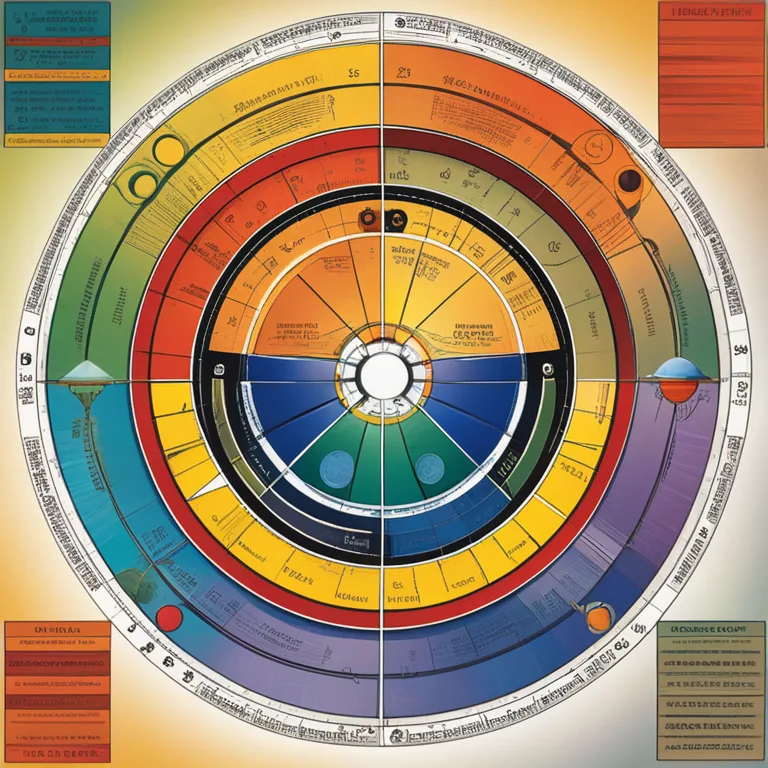
The Foundations of Biorhythm Theory Explained
Delve into the scientific and conceptual bases of biorhythms to understand how they purportedly influence human life and well-being.
article by Adrian Wallace
Introduction to Biorhythms
Biorhythms are an intriguing aspect of pseudoscientific thought, positing that human life is influenced by natural, rhythmic cycles. The theory of biorhythms suggests that from the moment of birth, individuals are affected by these cycles that impact physical, emotional, and intellectual capacities. The idea, though not supported by mainstream science, enjoys popularity in certain circles and is often explored by those interested in alternative wellness and personal development strategies. Biorhythms are said to forecast the fluctuations in various aspects of a person's life and, by doing so, offer a form of personal insight.

The Origins of Biorhythm Theory
The concept of biorhythms dates back to the late 19th century, with the work of Dr. Hermann Swoboda, a professor of psychology at the University of Vienna, and Dr. Wilhelm Fliess, a physician and a close friend of Sigmund Freud. They each observed recurrent patterns in various aspects of life and proposed independent yet similar theories. Swoboda and Fliess believed these cycles influenced human behavior and physiological states. While their ideas didn't gain significant scientific acceptance, they laid the groundwork for what would become known as biorhythm theory.

Three Primary Cycles
According to the theory of biorhythms, three fundamental cycles affect us—the physical (23 days), the emotional (28 days), and the intellectual (33 days). Each of these cycles oscillates between a positive phase, where capabilities in that area are said to be enhanced, and a negative phase, during which those same capabilities might be diminished. Proponents suggest that by charting these cycles, one can anticipate days of high achievement or caution against periods of potential difficulty or vulnerability.

Scientific Scrutiny and Skepticism
Despite its popularity in some circles, the concept of biorhythms has not held up well under the lens of scientific scrutiny. Multiple studies have found no significant correlation between the biorhythmic cycles and an individual's performance in physical, emotional, or intellectual tasks. Critics argue that any perceived accuracy of biorhythm predictions can be attributed to the placebo effect or selective thinking, where individuals remember predictions that seem accurate while forgetting those that do not.

Biorhythms in the Digital Age
As technology evolves, so does the interest in biorhythms, particularly within the realm of mobile apps and online platforms. In 2024 and beyond, it's likely that individuals who follow biorhythms will continue to use sophisticated algorithms and software to track their personal cycles. While these tools may give a more comprehensive analysis of one's supposed biorhythmic state, it's important to remember their basis in pseudoscience and approach their predictions with a degree of skepticism.
Applying Biorhythm Theory
Those who follow biorhythm theory often use it to improve their day-to-day lives, despite the skepticism surrounding it. Adherents might plan important activities or rest days according to their cycles, endeavoring to align their actions with predicted phases of strength or weakness. While skeptics dismiss these practices, some people report personal benefits and a greater sense of control over their lives, showcasing the complex interplay between belief, psychology, and behavior.
Published: 1/4/2024
Modified: 1/4/2024
More predictions
Come back here soon to learn more about yourself and your future


The Impact of Biorhythm Compatibility
Discover the impact of biorhythm cycles on relationship dynamics and compatibility in our insightful article.


The Accuracy of Biorhythms: Fact or Fiction?
Examine the validity of biorhythms in predicting personal vitality and life cycles in this in-depth analysis.


Biorhythms: How They Shape Your Life
Explore the practical applications of biorhythms in daily life, from personal wellness to performance optimization.